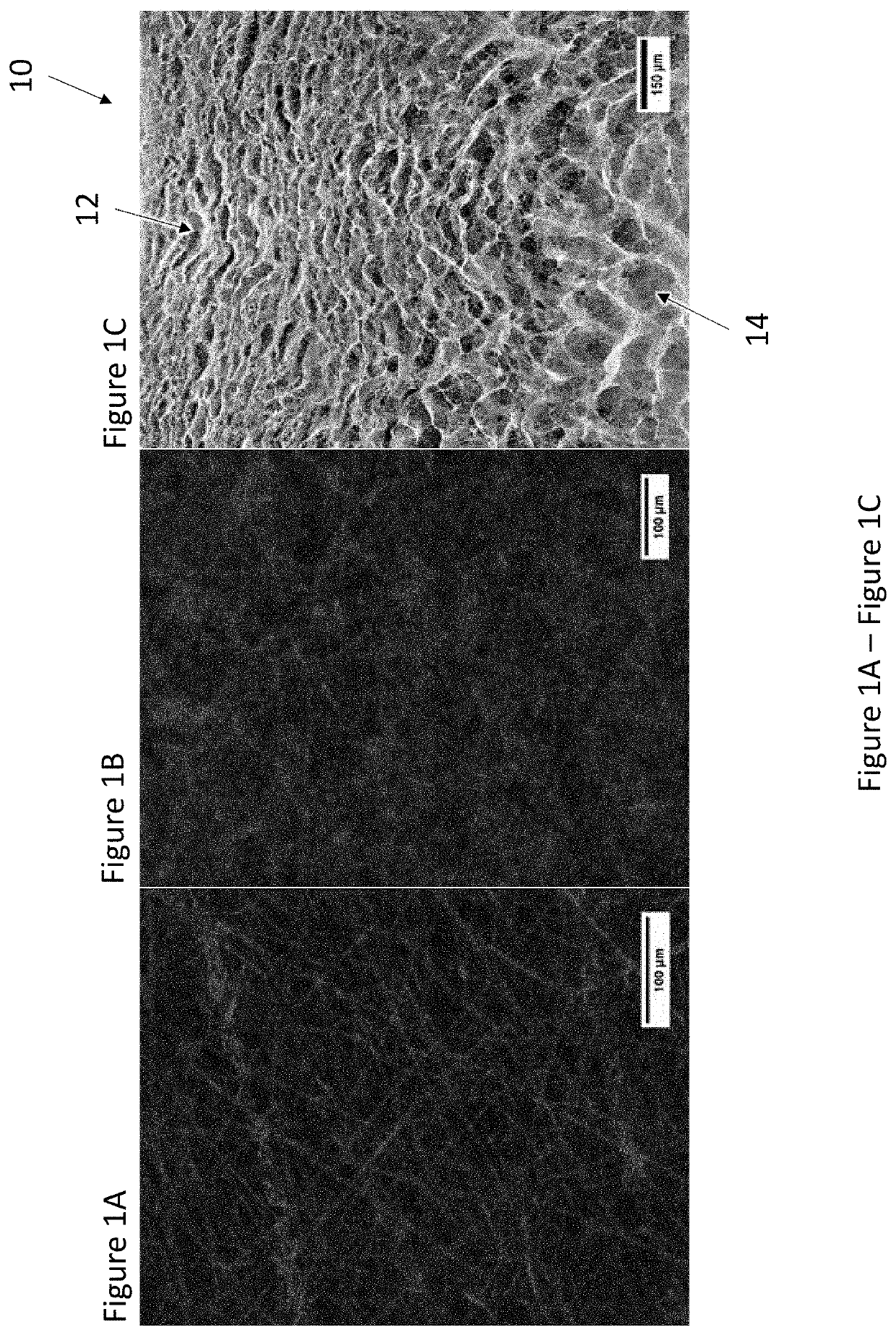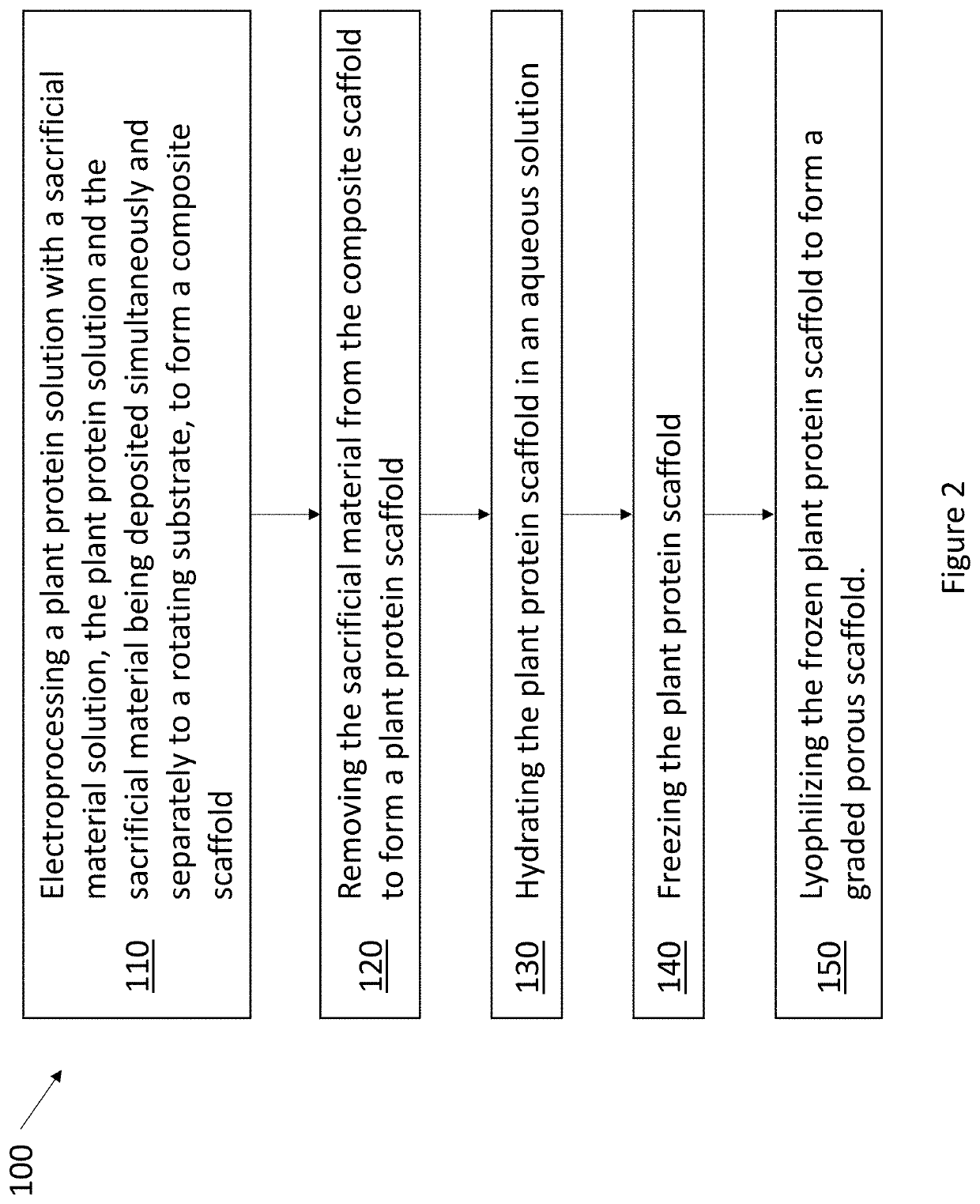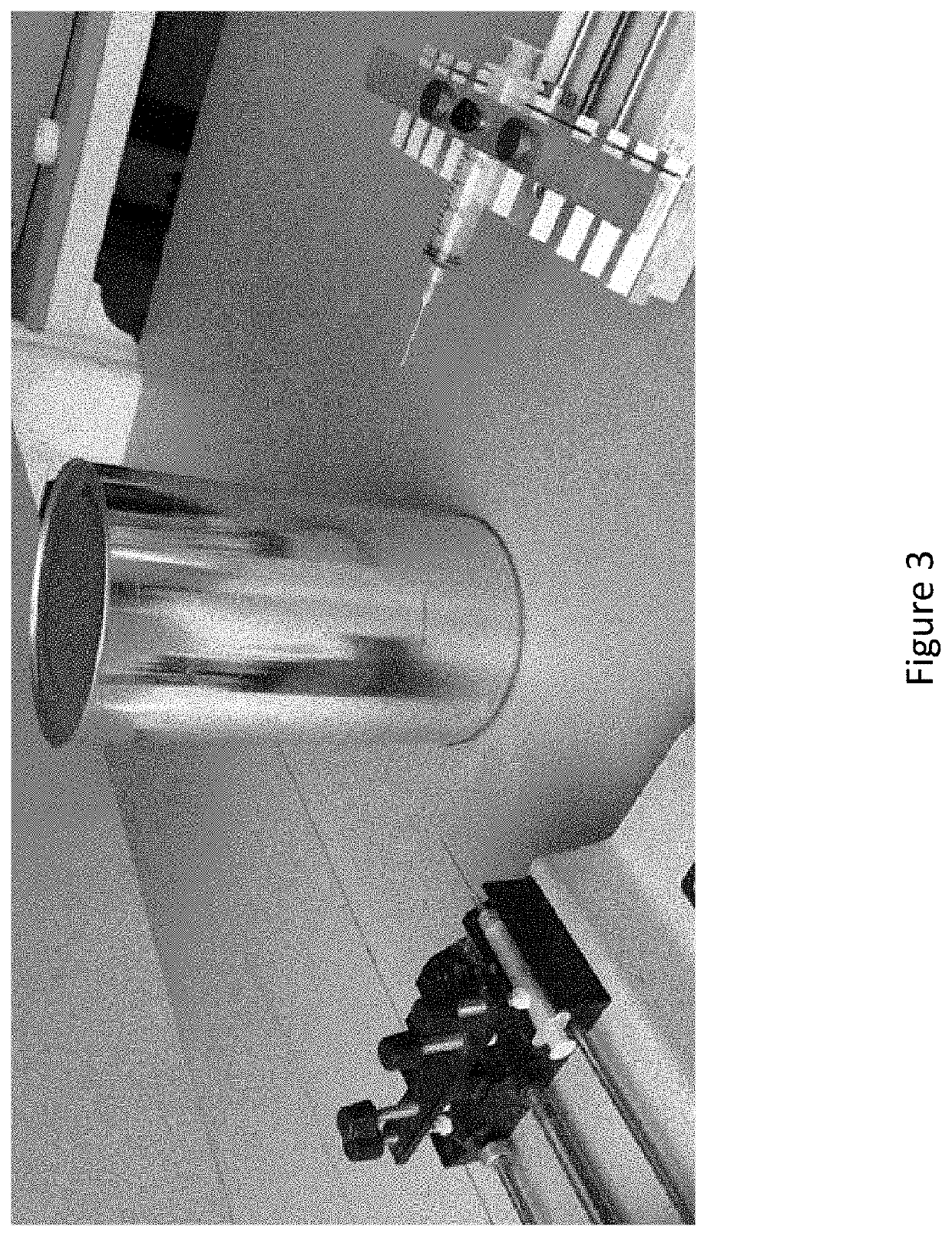Graded Porous Scaffolds as Immunomodulatory Wound Patches
a graded porous scaffold and immunomodulatory technology, applied in the direction of prosthesis, bandages, filament/thread forming, etc., can solve the problems of morbidity, mortality, and limited size of the donor skin area available for transplantation, and the need for living a normal life without pain or scarring is barely met, and the need for patients to live a normal life is barely m
- Summary
- Abstract
- Description
- Claims
- Application Information
AI Technical Summary
Benefits of technology
Problems solved by technology
Method used
Image
Examples
experimental examples
[0085]The invention is further described in detail by reference to the following experimental examples. These examples are provided for purposes of illustration only, and are not intended to be limiting unless otherwise specified. Thus, the invention should in no way be construed as being limited to the following examples, but rather, should be construed to encompass any and all variations which become evident as a result of the teaching provided herein.
[0086]Without further description, it is believed that one of ordinary skill in the art can, using the preceding description and the following illustrative examples, make and utilize the compounds of the present invention and practice the claimed methods. The following working examples therefore, specifically point out the exemplary embodiments of the present invention, and are not to be construed as limiting in any way the remainder of the disclosure.
example 1
Graded Hydrated Lyophilized (GHL) Scaffolds
[0087]The goal of the present study was to develop fibrous scaffolds with pores large enough to allow cell penetration into the depth of the scaffold, which reportedly initiates / favors the phenotypic switch of macrophages into the tissue remodeling M2 phenotype and thus enhances regenerative wound healing (Garg K et al., Biomaterials 34.18 (2013): 4439-4451; Wang Z et al., Biomaterials 35.22 (2014): 5700-5710; Sussman E M et al., Annals of biomedical engineering 42.7 (2014): 1508-1516).
[0088]The main component of the fibrous scaffolds is purified soy protein isolate (SPI), a paradigmatic, biocompatible biomaterial that has been shown to allow attachment, spreading and proliferation of cells in vitro (Lin L et al., Journal of tissue engineering and regenerative medicine 7.12 (2013): 994-1008). The sacrificial component of the scaffold is polyethylene oxide (PEO), an inexpensive polymer compound, readily available and soluble in water. As for...
PUM
| Property | Measurement | Unit |
|---|---|---|
| diameter | aaaaa | aaaaa |
| diameter | aaaaa | aaaaa |
| thickness | aaaaa | aaaaa |
Abstract
Description
Claims
Application Information
 Login to View More
Login to View More - R&D
- Intellectual Property
- Life Sciences
- Materials
- Tech Scout
- Unparalleled Data Quality
- Higher Quality Content
- 60% Fewer Hallucinations
Browse by: Latest US Patents, China's latest patents, Technical Efficacy Thesaurus, Application Domain, Technology Topic, Popular Technical Reports.
© 2025 PatSnap. All rights reserved.Legal|Privacy policy|Modern Slavery Act Transparency Statement|Sitemap|About US| Contact US: help@patsnap.com



